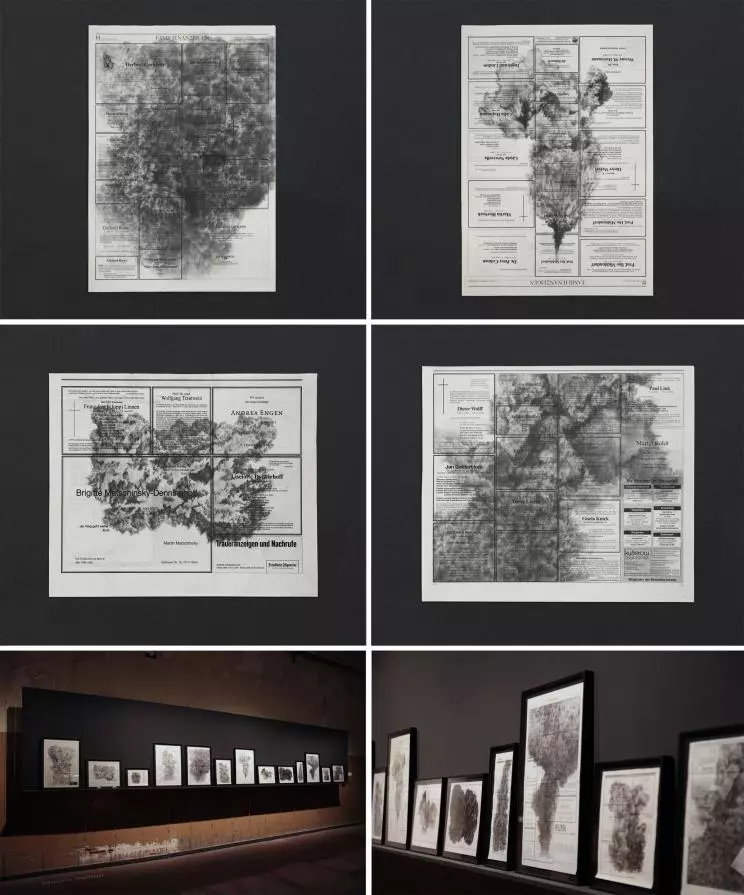Partículas en suspensión (Particles in suspension)
Pencils and graphite powder on newspaper obituaries.
13 pieces. Variable dimensions.
(Please, for more information and photos visit my web-site: www.maurovallejo.com)
Memento homo, quia pulvis es, et in pulverem revertis (Remember, man, you are dust and to dust you will return)
It is rare for anyone not to have heard this quote sometime, whatever their religious tenets. Catholics hear it at least once a year, at the start of Lent on so-called “Ash Wednesday” when the priest follows a rite in which he sketches an ash cross on the foreheads of the faithful while speaking this phrase. It is taken from the Bible's Book of Genesis 3:19.
In certain religious ceremonies ash is a metaphor for death and a reminder that our body is mortal. Dust, smoke, the ash itself are similar components forming part of the same process: the decomposing of elements to give rise to others.
This well-known sentence has always made a big impact on me owing to the undeniable visual power it holds, and I understand that it holds its value beyond beliefs or professions of faith. By taking it as the backbone of the project Particles in suspension, I wanted to delve into its theoretical content and give it a plastic sense, “sketch” its significance, transforming the “figurative sense” into something real and vice versa. I try to propitiate new approaches and readings to reflect on death and our condition as mortals, using like symbols and elements.
One of its most common and significant forms are the death notices. Although a priori their purpose is simple and direct, the majority of these carry a considerable informative charge that reveals the cultural, political, economic and religious differences that exist between one deceased individual and another. All these details contribute to the creation of a fantastic social and human analysis. In a printed newspaper the contrasts are greater owing to the financial levy: notice size, layout, body and number of letters, symbols, etc. Each detail is painstakingly arranged and planned in a ceremonial tone. It appears that death makes us equal in the fact itself but not in its attainment.
The images show a collection of dark and twisted shapes that emerge from among the names and reminders. Living shapes generated by death, seizing the space, extending and gaining ground. Body, soul and spirit breaking up in unison, evaporating. Dust, that visible-invisible element according to Gaston Bachelard, impregnates everything. Dust also transformed into ash, into smoke and into fire. What we see is only a trace, a momentary mark or, as if it were a photograph by Baraduc, “a collective portrait of the aura”. (In 1907 the photographer André Baraduc, after the death of his wife, photographed the inert body and captured a curious set of vapours and lights that became blurred as time passed...).
The manner and forms of representation chosen aim for both a technical and emotional approach to what is represented. The drawings are mostly made from dust, graphite dust, something that permits creating a similar atmosphere to that of the original motif, dense yet slight. This is also true of the medium: newspaper is a weak and base material, highly degradable and therefore one that will gradually decompose to turn into something aged and wrinkly, like skin, like a body with a life of its own.
 Share / Save
Share / Save








Comments 0
Say something